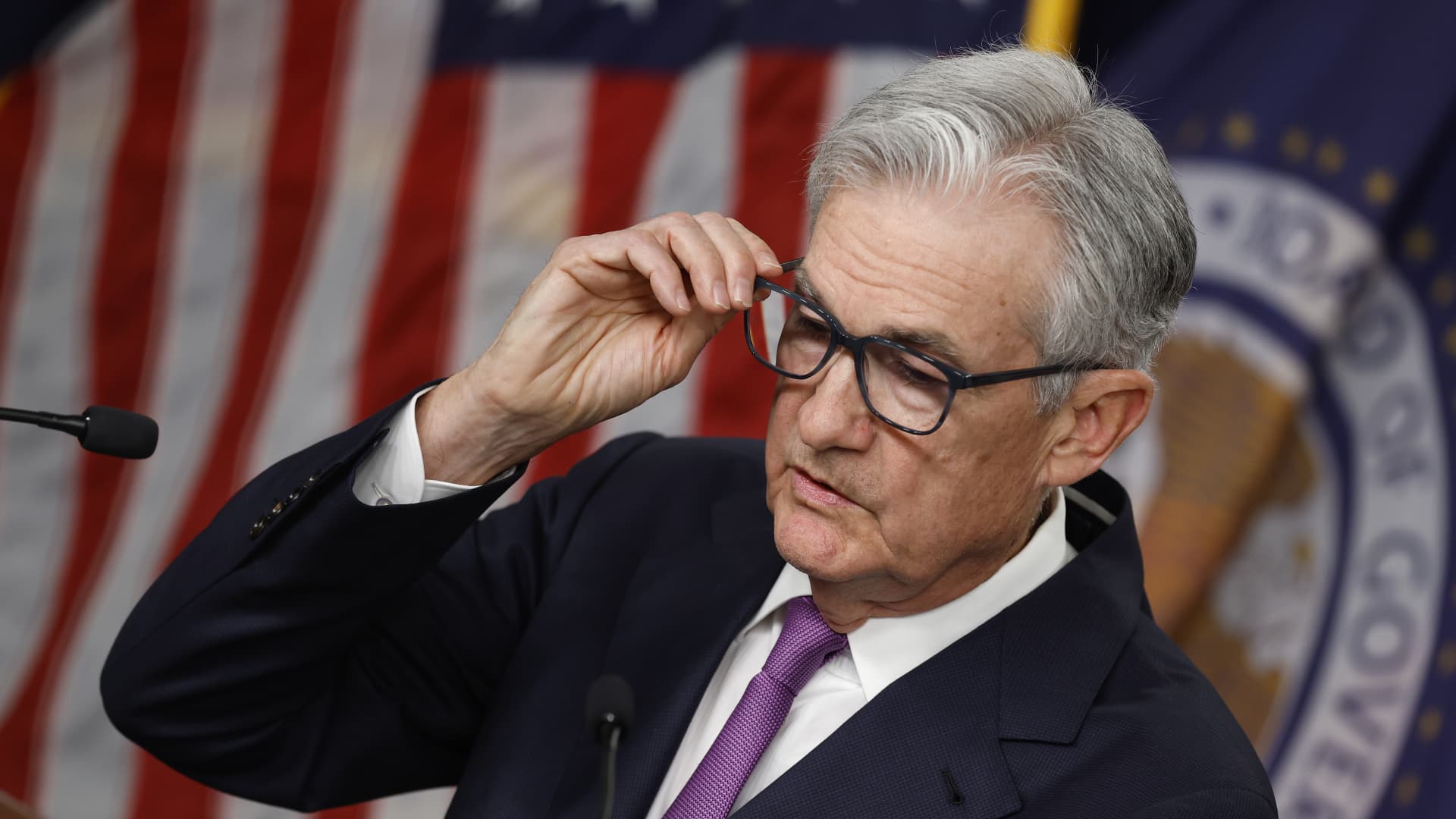Federal Reserve Board Chairman Jerome Powell speaks during a news conference after a Federal Open Market Committee meeting on September 20, 2023 at the Federal Reserve in Washington, DC.
Chip Somodevilla | Getty Images News | Getty Images
This report is from today’s CNBC Daily Open, our new, international markets newsletter. CNBC Daily Open brings investors up to speed on everything they need to know, no matter where they are. Like what you see? You can subscribe here.
What you need to know today
Recoiling from dot plot
U.S. stocks slumped and Treasury yields rose to their highest levels in more than 16 years after digesting the Fed’s forecast. Likewise, markets across Asia-Pacific sank Thursday, with all major bourses falling at least 1%. Though also in the red, mainland China’s Shanghai Composite fared better, losing a more modest 0.56%.
Unappetizing offerings?
Instacart shares sank 10.68% on their second day of trading, closing at $30.10 — that’s only 10 cents more than their initial public offering price. Meanwhile, Klaviyo shares jumped 9.2% on their first day on the New York Stock Exchange. Last, shares of Arm continued sliding, losing 4.1% — famed tech investor Cathie Wood said she didn’t participate in Arm’s IPO because it looked overvalued.
The show might go on
The Writers Guild of America will meet the Alliance of Motion Picture and Television Producers Thursday, and both sides hope to reach a deal at that upcoming meeting, sources told CNBC. In other words: The five-month-long strike in Hollywood might end as soon as today. A caveat: If there’s no deal, the strike could last till the end of the year, according to people close to the negotiations.
[PRO] ‘Problematic’ oil spike
Jeffrey Gundlach, CEO of DoubleLine Capital, thinks the recent oil spike is “going to be problematic” for the economy. That might force the Fed’s hand, making it more probable than before the central bank hikes interest rates one more time before the end of the year. Oil prices have risen recently after Saudi Arabia and Russia enacted a supply cut that will last until December.
The bottom line
As expected, the Federal Reserve declined to increase interest rates. But it put the possibility of one last hike on the table. And rate projections for 2024 and beyond were higher than expected. In June, the Federal Open Market Committee forecast four rate cuts next year, totaling one percentage point. That’s dropped to two cuts in the latest dot plot, putting rates around 5.1%.
Try to see that from a glass-half-full perspective. That’s what Fed Chair Jerome Powell seems to be suggesting, at least.
“Broadly, stronger activity means we have to do more with rates, and that’s what that meeting is telling you,” Powell said. In other words, it’s not inflation keeping rates high — even though Powell emphasized “the process of getting inflation sustainably down to 2% has a long way to go.” It’s an economy that’s expanding faster than the Fed had expected.
Indeed, central bankers sharply revised up their Summary of Economic Projections. At their June meeting, the Fed thought gross domestic product would increase 1% in 2023. That expectation’s more than doubled to 2.1%. For 2024, the Fed also raised its growth forecast from 1.1% to 1.5%.
That might be why FOMC members think rates would remain around 2.9% in 2026. That’s higher than the so-called neutral rate (of 2.5%, according to the Fed) that neither crimps nor encourages economic growth, suggesting there’s a possibility the U.S. economy will continue to run hotter than anticipated even then.
Still, Powell warned against assuming a soft landing — where inflation is quashed while the economy hums along happily — is a “baseline expectation,” as a reporter put it at the press conference.
Despite the prognostications of robust economic growth, markets focused on the “higher rates for longer” part of the dot plot, seeing the glass as half empty.
The S&P 500 slid 0.94%, the Dow Jones Industrial Average lost 0.22% and the tech-heavy Nasdaq Composite slumped 1.53%, weighed down by a wave of rate-sensitive tech stocks closing in the red. Meanwhile, the yield on the U.S. 2-year Treasury jumped to its highest level since July 2006, while the 10-year yield reached a high not seen since November 2007.
The hope is that this is a temporary slump in financial markets. After all, economic expansion means more room for corporate profits to grow. As third-quarter earnings season kicks in soon (yes, it’s that time of the year again!), we’ll find out if markets can shake off the ghost of future interest rates and focus on the growth of the here and now.
— CNBC’s Jeff Cox and Yun Li contributed to this report

